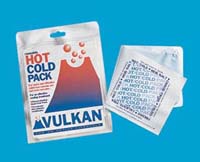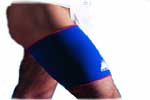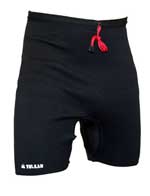Hamstring Injury & Football
May 13 2008 | Articles

A common football injury is a Hamstring injury. This sports injury is also called ‘pulled Hamstring’. “Pulled muscle”, is another term for this particular injury, it is derived from the description as to how the injury took place.
The Hamstring muscles, when stretched beyond its limits, causes the muscle to tear. This tear is now referred to by medical professionals as a Hamstring strain. There are typically three classifications of Hamstring strain that are classified according to its degree.
• First degree Hamstring strains are simply few damaged muscle fibres;
• Second degree strains involve damage to a number of extensive muscle fibres;
• Third degree strains involve a complete rupture of muscle fibres.
Three muscles comprise the Hamstring muscle group but function almost similarly; semi-membranosus, semi-tendonosus femoris, and the biceps; all of which help the person extend his hips or bend his knees.
How to Distinguish for a Possible Hamstring Injury
Signs with the grade one Hamstring strain do not normally show until after a particular activity. Hamstring tightness or feeling a sensation of Hamstring cramps, along with slight feeling of pain especially when the muscle is stretched or contracted are some signs of a Hamstring injury.
For grade two Hamstring strains, immediate pain is noticeable and is more painful than those of the grade one injuries. This injury is confirmed by severe pain when muscles are stretched or contracted. These types of Hamstring strains are normally sore to touch.
Grade three Hamstring strains are generally very serious injuries. Immediate stabbing pains or burning sensations are felt by the football player and he is unable to walk without having to endure the pain. With this type, the muscles are completely torn. It is also possible to see a large lump of muscle tissue right above where the muscle tear is.
As for both the grade two and three injuries, large bruises normally appear on the injured area after a few days.
How to Treat a Hamstring Injury
There are some effective ways in treating any hamstring injuries:
• Consult professional sport injury experts
• Apply ice packs on the damaged sites to relieve pain
• Control excessive bleeding and swelling by applying compression bandages
• When doing muscle strengthening exercise, use resistance bands
• Always wear Thigh Supports or Compression Shorts during rehabilitation
First aid treatment for a Hamstring muscle injury is the RICE protocol: Rice, Ice, Compression, and Elevation. Keep in mind not to directly apply the ice to the skin.

View Reusable ice packs
The first few days of treating a Hamstring injury should be similar, regardless of its severity. The Hamstring has to be applied with an ice pack for twenty minutes every two hours and has to be rested in an elevated position. To minimize the swelling and the bleeding of the tissues; a compression bandage has to be applied.
Preventing Hamstring Injury
• Have warm up exercises before any sporting activities
• Cool down after sporting activities
• Have regular stretching for muscle length maintenance
• Use energy bars and gels to replenish carbohydrates on sporting activities
• To retain muscle warmth, wear Thigh Support or Compression Shorts
Football Rescue Recommends Hamstring Supports
![]()
![]()
![]()
![]()
![]() 5 Star Rating
5 Star Rating

The Vulkan Neoprene range features premium quality neoprene. This offers the best possible combination of support, compression, heat retention and comfort. Vulkan Neoprene has a unique spiral lining which is critical in removing excess sweat which avoids skin problems and is more comfortable to wear.
By retaining heat there is an increase in the elasticity of the soft tissues. This is helpful for the treatment and prevention of a thigh muscle injury. By increasing local blood flow, healing and recovery times can be reduced following a thigh injury. The Vulkan Thigh support can also be used as a preventive measure where there has been a history of thigh muscle injury. By warming the tissues and acting as a heat retainer it can reduce the risk of re-injury.
When to use it?
The Vulkan Thigh Support can be useful during acute and chronic hamstring and thigh muscle strains. The warmth provided by the neoprene support can also be very useful for the prevention of hamstring and thigh muscle strains. It is easy to apply and doesn’t restrict movement, making it ideal for use in all sports.
View hamstring supports that provide warmth, compression and support to injured thigh & hamstring areas

View hamstring compression shorts
